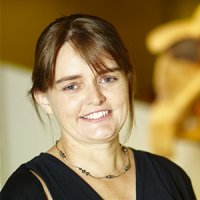Danielle Clode

Danielle Clode is an author and associate professor in creative writing at Flinders University whose first book, Continents of Curiosities, was inspired by the natural history collections of Museums Victoria. Her book Voyages to the South Seas won the Victorian Premier’s Award for Non-fiction in 2007. In 2014 she was the ABR Dahl Trust Fellow and her article ‘Seeing the Wood for the Trees’ appeared in the November 2014 issue of ABR. Her latest book is Koala: A life in trees (2022).
Australian nature writing has come a long way in recent years. Not only do we have an abundance of contemporary nature writers, but we are also rediscovering the ones we have forgotten. The neglect of Australia’s nature writing history, with its contributions to science, literature, and conservation, is happily being redressed with recent biographies of Jean Galbraith, Rica Erickson, Edith Colem ... (read more)
It is hard to think of a more distinctive and idiosyncratic author than Western Australian Shaun Tan. Winner of the prestigious Astrid Lindgren Memorial Award for children’s literature, Tan’s work has also been recognised by numerous awards in speculative fiction, illustration, and children’s books, including an Academy Award in 2011 (for the animated short adaptation of The Lost Thing). By ... (read more)
In 2014, veteran ABC science broadcaster Robyn Williams was diagnosed with bowel cancer. It was, he reports, his third brush with death, following cardiac arrest in 1988 and bladder cancer in 1991. His description of the experience, including surgical reduction of his gut and rectum and subsequent debilitating chemotherapy, is brief but graphic. He has survived, but the experience, as he puts it, ... (read more)
David Attenborough turned ninety last year. In a short animation celebrating his birthday, two Aardman penguins muse on their first meeting with the famous naturalist. ‘There’s something just about him,’ says the first penguin. ‘I don’t know why you wouldn’t love David Attenborough,’ declares the second. Indeed, it is hard to find anyone who does not admire Attenborough. Over the dec ... (read more)
Millions of words have been printed by and about Charles Darwin. There are hundreds of biographies, the dozens of books he wrote (including his own autobiography), as well as various pamphlets, essays, correspondence, diaries, manuscript notes, and other ephemera. Fascinating though the man and his work is, it must be hard to come up with anything new to say about him.
Perhaps this is why A.N. Wi ... (read more)
What does it mean to be human – nearly human, not-quite-human, or even inhuman? Such questions have preoccupied writers and researchers for centuries, from Charles Darwin and Mary Shelley to the uncanny valley of robotics, AI, and a trans-human future. In Wild Man from Borneo, Robert Cribb, Helen Gilbert, and Helen Tiffen explore this question through the prism of our relationship with one of ou ... (read more)
Maralinga is a name familiar to most Australians as the site of British nuclear testing in the 1950s. Less familiar are the earlier tests at the Monte Bello Islands off Western Australia and Emu Field in South Australia. All have left a toxic legacy in our history.
Elizabeth Tynan’s finely researched book on the history of Maralinga and its precursors brings to light a remarkable period of Aust ... (read more)
The story of Robinson Crusoe, penned by Daniel Defoe in 1719, is one those remarkable books that created a new genre. The ‘Robinsonade’ or castaway story became one of the most popular forms of adventure novel, inspiring a host of famous ‘imitators’: Robert Louis Stevenson’s The Ebb-Tide (1894), R.M. Ballantyne’s The Coral Island (1858), and Jules Verne’s Mysterious Island (1874). De ... (read more)
By the end of the eighteenth-century, botany was one of the few sciences regarded as suitable for women. Carolus Linnaeus had infamously declared that his system of botanical taxonomy was so simple that even 'women themselves' could understand it. Botanical collection, identification, and cultivation extended the traditionally feminine occupations of flower arranging, gardening, and herbal lore, a ... (read more)
